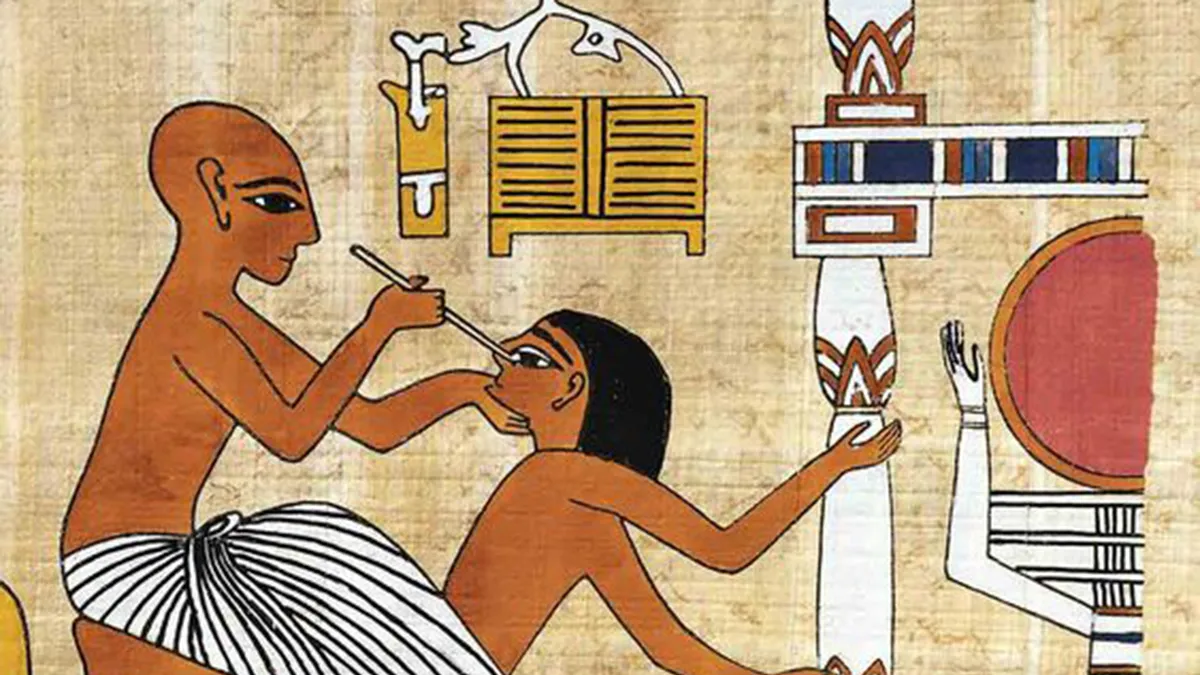A few months ago, I visited the National Museum of Australia’s Discovering Ancient Egypt exhibition in Canberra. As modern museums will, it puts high tech wizardry alongside the millennia-old exhibits in glass cases. The three-dimensional, interactive scan of one of the mummies was particularly fascinating. A slightly odder bit of tech was the machine that dispensed, at the press of a button, the “scents of Ancient Egypt”: lotus flowers, incense and, supposedly, Ancient Egyptian halitosis.
Was the stinky breath machine really fair to Ancient Egyptian hygiene?
In fact, the Ancient Egyptians were rather fastidious, for their time, about hygiene.
The ancient Egyptians believed that cleanliness was important for both physical and spiritual well-being, and their hygiene system was complex, encompassing bathing, shaving, dental care, and more.
Although several of their methods may appear primitive in modern times, it is worth noting that some dental hygiene techniques used by the ancient Egyptians are still used today, and many were far beyond their time.
Egyptians were particularly fussy about hair, especially which to keep and pamper, and which to eliminate.
Both men and women regularly shaved their bodies, going to great lengths to pluck any body hair. Various tools such as tweezers, knives, and razors were used for this purpose, and many special oils were used as shaving lotions.
It was also common for men to regularly shave their beards and facial hair, keeping the skin as smooth and hairless as possible.
As for the hair on their heads, Egyptians were even more strict and careful. The elite in ancient Egypt hired their hairdressers and commonly shaved their heads, as was the style for quite a long time.
That often included women, who preferred to shave their heads and wear wigs.
Not only did wigs protect against lice, but they were comfortable in the dry climate and made personal hygiene easier. Wigs were first made of human hair, but eventually, horse hair was used in wig-making as well.
Wealthy Egyptians, of course, afforded the best wigs, which were sometimes adorned with jewelry, gems, and perfume. However, poorer people from lower classes also wore wigs, theirs typically made from papyrus or other lower-quality materials.
Not only, too, did Egyptian women use henna to dye greying hair, but they also at times used extensions carefully woven and knotted with beeswax and resin.
Egyptians also bathed regularly, though private baths were uncommon. Most bathed in the Nile or in pools. They may also have had a kind of shower: a sieve or a basket through which the water was filtered while they washed. Instead of soap, they used salts and ointments to cleanse and protect the skin.
Cosmetics, from skin creams, to kohl, to rouge and lipstick made from red ochre, were commonly used by all classes of Egyptian society.
Not unlike their obsession with cosmetics, ancient Egyptians also loved wearing perfumes and deodorants. The most famous of which was a perfume known to us as Kyphi.
But what about their teeth?
Egyptians used both toothbrushes and toothpastes. Toothpaste in fact predated the toothbrush: a paste made of mint, rock salt, pepper and dried iris flower. Toothbrushes were, at first, a frayed stick. Later, this became a notched stick with plant bristles on the end.
Furthermore, to freshen their breath, they used various breath mints – some homemade, others produced and sold by merchants. Made from a mixture of frankincense, cinnamon, melon, pine seeds, and cashews, and commonly mixed with honey, the small candies likely would have made a great after-dinner mint.
Additionally, undiluted natron – a sodium bicarbonate substance – was used as toothpaste and mouthwash. Ancient Egyptians also seemed to have chewed on parsley or similar herbs for fresh breath throughout the day.
Archaeological evidence suggests that Egyptians’ efforts at dental hygiene didn’t go to waste. Caries (tooth decay) seem rare. Still, aged Egyptians suffered from tooth wear, leading to pulpal exposure and abscesses.
So, the stinky breath machine in the museum might have been onto something.








